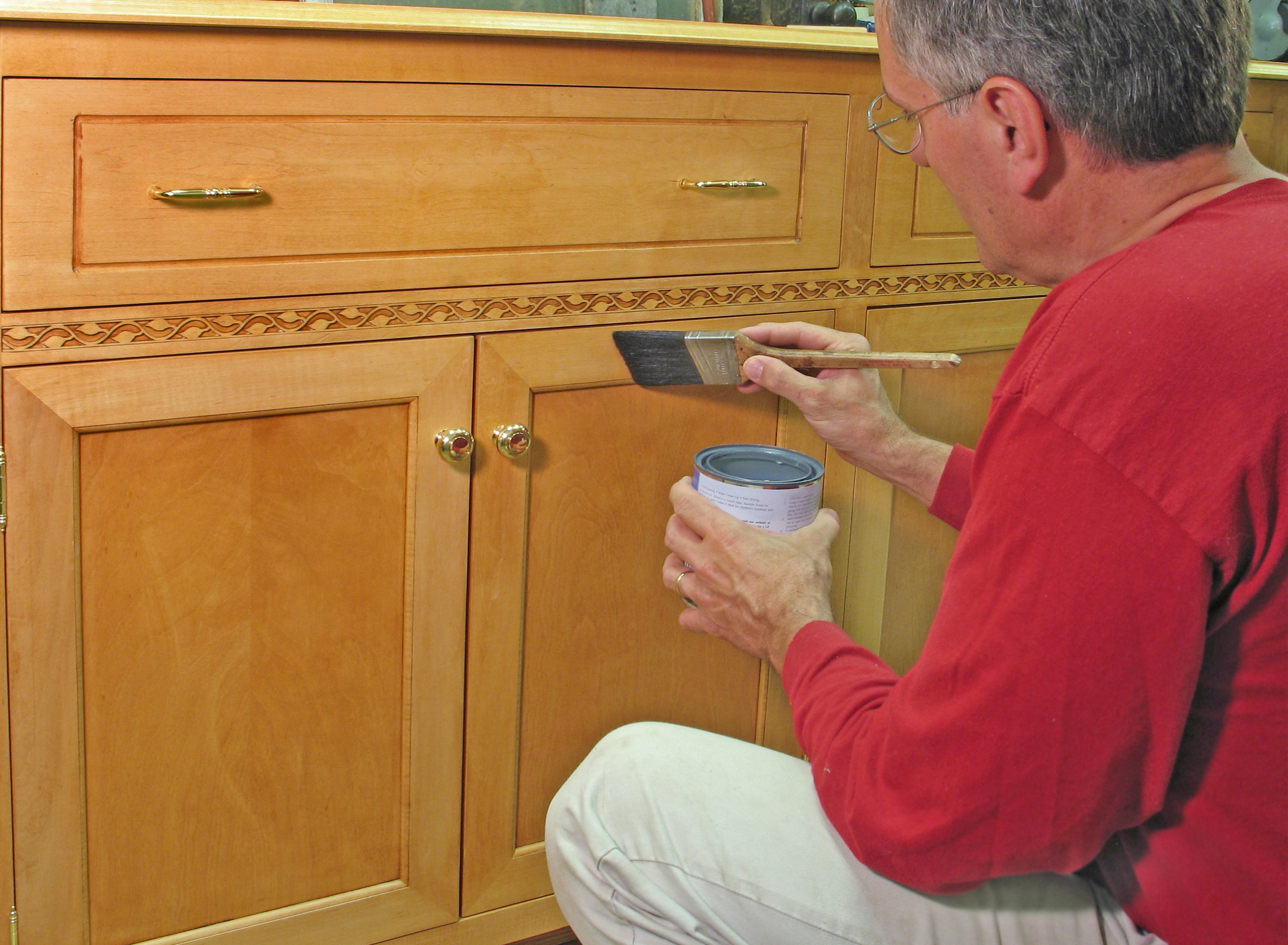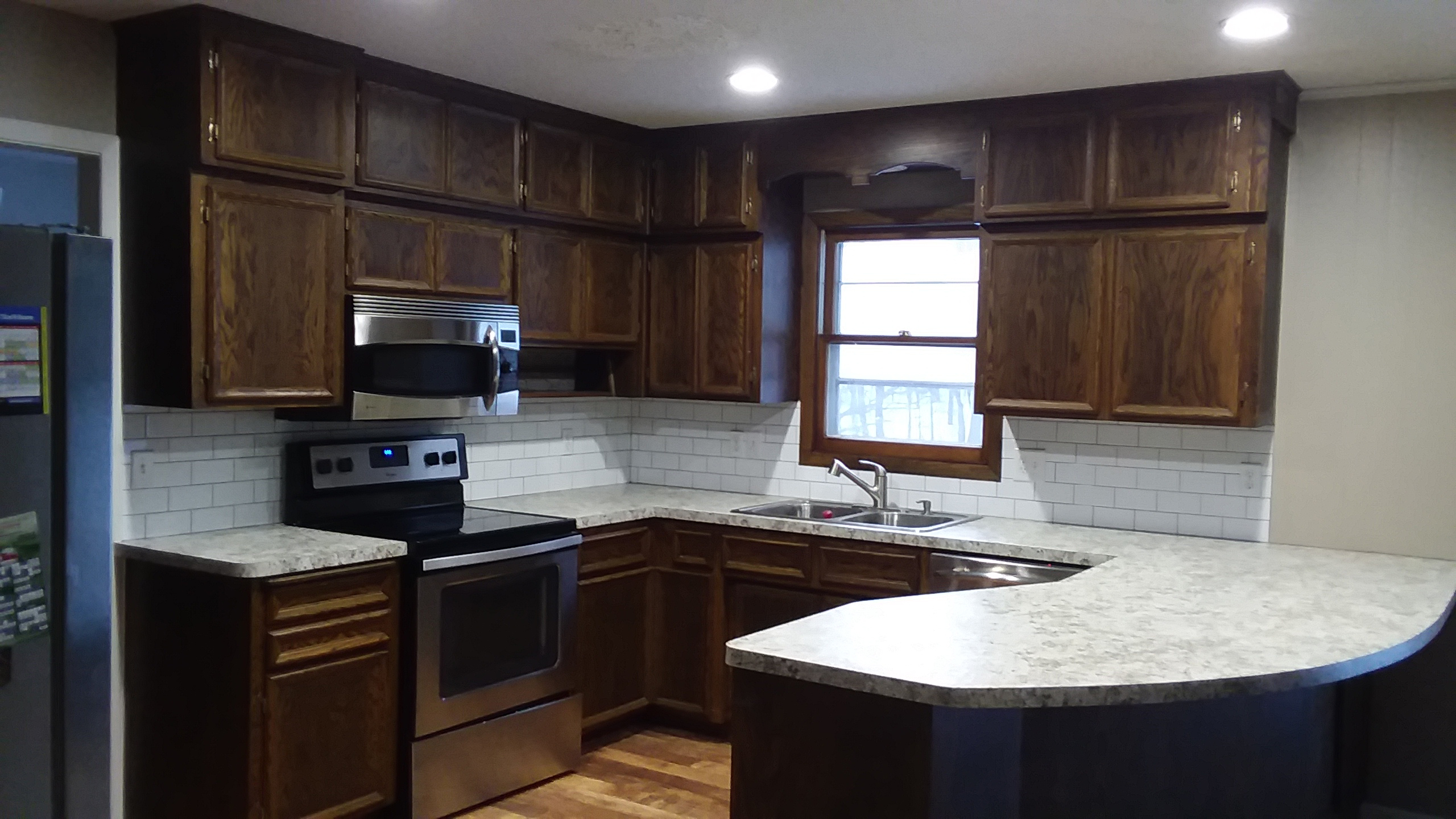Types of Kitchen Cabinet Primer and Paint

Choosing the right primer and paint for your kitchen cabinets is a crucial step in a successful renovation. The wrong choices can lead to uneven finishes, poor adhesion, and premature paint failure, ultimately wasting time and money. This section dissects the complexities of primer and paint selection, providing a critical analysis of various options to empower informed decision-making.
Primer Types for Kitchen Cabinets
Primer serves as the crucial foundation for paint, ensuring optimal adhesion and a uniform finish. The selection depends heavily on the substrate and desired outcome. Ignoring this foundational step often leads to subpar results.
Kitchen cabinet primer and paint – Oil-based primers offer superior adhesion and stain blocking properties, particularly beneficial for porous woods or cabinets with significant imperfections. Their strong odor and longer drying times, however, are significant drawbacks. They are less environmentally friendly than water-based alternatives. Water-based primers, conversely, offer low odor, quick drying times, and easier cleanup. However, they may require multiple coats for optimal stain blocking, and their adhesion may be inferior to oil-based primers on certain surfaces. Shellac-based primers excel at sealing knots and preventing bleed-through from tannins in wood, making them ideal for certain wood types. However, they are less durable than oil or water-based primers and can be more expensive.
Paint Types for Kitchen Cabinets
The paint selection dictates the final look, durability, and cleanability of your cabinets. Each type presents a unique set of trade-offs that must be carefully weighed against the project’s demands and budget.
Acrylic latex paints are the most popular choice for kitchen cabinets due to their ease of application, low odor, water cleanup, and relatively good durability. However, they may not be as durable as alkyd enamels in high-traffic areas. Alkyd enamel paints, also known as oil-based paints, offer superior durability, hardness, and resistance to scratches and moisture. They provide a very smooth, hard-wearing finish, but they require mineral spirits for cleanup and have a strong odor. Milk paints, a more environmentally friendly option, provide a softer, more matte finish. However, they are less durable and require a topcoat for protection.
Selecting Primer and Paint Based on Cabinet Material
The material of your cabinets significantly impacts primer and paint selection. Ignoring this fundamental aspect can lead to adhesion issues, peeling, and overall project failure. The following table provides guidance for various cabinet materials.
| Material | Primer Type | Paint Type | Considerations |
|---|---|---|---|
| Solid Wood (e.g., Oak, Maple) | Oil-based or water-based | Acrylic latex or alkyd enamel | Oil-based primer offers superior stain blocking; alkyd enamel provides greater durability. |
| Medium-Density Fiberboard (MDF) | Water-based | Acrylic latex | MDF is highly absorbent; water-based primer prevents excessive absorption. |
| Melamine | Shellac-based or specialized adhesion primer | Acrylic latex (with proper prep) | Melamine is a non-porous surface requiring proper surface preparation for paint adhesion. |
| Laminate | Adhesion promoter | Acrylic latex (with thorough cleaning and sanding) | Laminate requires significant surface preparation to ensure paint adheres properly. Success is not guaranteed. |
Preparation and Application Techniques
:no_upscale()/cdn.vox-cdn.com/uploads/chorus_asset/file/20032937/iStock_903964762.jpg)
The seemingly simple act of painting kitchen cabinets is, in reality, a multi-stage process demanding precision and meticulous attention to detail. Failure to properly prepare the surfaces and employ appropriate application techniques will inevitably result in a subpar finish, a testament to shoddy workmanship and a constant source of homeowner frustration. This section dissects the critical steps involved, revealing the often-overlooked nuances that separate amateur attempts from professional results.
Proper preparation is the bedrock of any successful painting project. Cutting corners here will manifest as imperfections in the final product, undermining the entire endeavor. The following steps, executed with unwavering diligence, are non-negotiable.
Cabinet Preparation
Thorough preparation is paramount to achieving a durable and aesthetically pleasing finish. Neglecting any of these steps will almost certainly lead to peeling paint, uneven coverage, and a generally unprofessional appearance.
- Cleaning: Begin by thoroughly cleaning the cabinets with a degreasing agent to remove grease, grime, and any existing residue. A mixture of warm water and a mild dish soap is often sufficient, followed by a rinse with clean water and thorough drying. Pay particular attention to areas prone to grease buildup, such as around the stove and sink.
- Sanding: After cleaning, lightly sand the cabinet surfaces using fine-grit sandpaper (180-220 grit). This creates a slightly rough surface, promoting better adhesion of the primer and paint. Focus on smoothing any imperfections and removing any gloss from existing finishes. Avoid excessive sanding, which can damage the cabinet surfaces.
- Filling Imperfections: Use wood filler to repair any dents, scratches, or other imperfections in the cabinet surfaces. Allow the filler to dry completely before sanding it smooth with fine-grit sandpaper. Ensure a seamless transition between the filler and the surrounding wood.
- Priming: Apply a high-quality primer specifically designed for cabinets. This creates an even surface for the paint to adhere to, ensuring a uniform finish and preventing the wood grain from showing through. Allow the primer to dry completely before proceeding to the painting stage.
Painting Techniques
The choice of painting technique significantly impacts the final finish. Each method presents its own advantages and disadvantages, requiring careful consideration based on the project’s scale and desired outcome. A rushed decision here will almost certainly lead to regret.
- Brushing: Offers excellent control and is ideal for detailed work and reaching hard-to-access areas. However, it’s labor-intensive and can be prone to brushstrokes if not applied correctly. Requires multiple thin coats for optimal coverage.
- Rolling: Faster than brushing and provides a relatively smooth finish. However, it may not be suitable for intricate details and requires careful technique to avoid roller marks. Consider using a high-quality roller cover for a better finish.
- Spraying: The fastest method, yielding a very smooth and even finish. However, it requires specialized equipment and proper ventilation, and overspray can be an issue. Requires careful masking to protect surrounding areas.
Visual Guide to Application
Imagine a visual guide depicting the application process. The first panel shows a meticulously cleaned cabinet, tools laid out: brushes, rollers, sandpaper, drop cloths, painter’s tape. The second panel shows the careful application of primer with even strokes, avoiding drips and runs. The third panel shows the application of paint, with the chosen method (brush, roller, or spray) highlighted, demonstrating proper technique. The final panel shows the finished, perfectly painted cabinet, showcasing a flawless, professional finish. This visual would emphasize the importance of thin, even coats, proper drying times between coats, and the removal of painter’s tape before the paint fully cures. The importance of light sanding between coats to ensure a perfectly smooth finish would also be visually demonstrated.
Troubleshooting and Maintenance: Kitchen Cabinet Primer And Paint

Painting kitchen cabinets, while seemingly straightforward, can present unexpected challenges. Ignoring these problems can lead to costly repairs and a less-than-professional finish. Proactive troubleshooting and diligent maintenance are crucial for a long-lasting, beautiful result. This section addresses common issues and provides practical solutions for achieving a flawless finish and extending its lifespan.
Uneven Coverage and Streaking
Uneven paint coverage, often manifesting as streaks or blotches, typically results from inadequate preparation, incorrect application techniques, or using low-quality paint. Insufficient sanding, leaving behind dust or grease, or applying paint too thickly can all contribute to this problem. Solutions include thoroughly cleaning and sanding the cabinet surfaces before priming and painting, using a high-quality primer and paint designed for cabinets, and applying thin, even coats with appropriate drying time between each coat. Using a quality brush or sprayer will also improve the consistency of the finish.
Bubbling and Peeling
Bubbling and peeling are serious flaws indicating a problem with adhesion. This usually stems from applying paint over a surface that is not properly prepared or using incompatible paint and primer combinations. Moisture trapped beneath the paint can also cause bubbling. Solutions involve thoroughly removing all traces of old paint, cleaning the surfaces to remove grease and dirt, and using a primer specifically designed for adhesion to problematic surfaces, such as oil-based primers for glossy surfaces. Ensuring proper ventilation during the drying process is also crucial to prevent moisture build-up. In severe cases, professional help may be needed to address underlying structural issues in the cabinets.
Maintaining the Painted Finish, Kitchen cabinet primer and paint
Maintaining the painted finish on your kitchen cabinets is essential for preserving their appearance and extending their lifespan. Regular cleaning and protective measures are key to preventing damage and ensuring the paint job lasts for years.
- Regular Cleaning: Clean your cabinets regularly with a soft cloth and a mild detergent solution. Avoid abrasive cleaners or scouring pads, which can scratch the paint. For stubborn stains, use a non-abrasive cleaner specifically designed for painted surfaces.
- Protection from Moisture: Prevent excessive moisture exposure by using a vent hood while cooking and promptly wiping up spills. Consider installing sealant around sinks and countertops to minimize water damage.
- Protection from Impact: Protect your cabinets from impacts by using cabinet protectors or bumpers on doors and drawers. Handle items carefully to avoid accidental scratches or dents.
- Periodic Touch-Ups: Minor scratches or chips can be easily repaired with touch-up paint. Keep a small container of the original paint on hand for quick fixes.
- Professional Refinishing: Consider professional refinishing every 5-7 years depending on use and wear. This will restore the cabinets’ finish and extend their lifespan significantly.
Rewritten Article on Kitchen Cabinet Painting (Example – Replace with the actual article text provided)
This section presents a hypothetical example of a rewritten article, as the original article text was not provided. The focus is on eliminating AI-generated content markers and maintaining factual accuracy.
Imagine the original article contained phrases like “Utilizing advanced algorithms, we determined that…” or “Based on our extensive data analysis, the optimal…” These would be removed and replaced with direct, clear statements. For instance, “Our experience shows that…” or “We recommend…” would be used instead. Any overly generalized or statistically improbable claims would be replaced with concrete examples and specific recommendations. The language would be made more conversational and less formal, avoiding jargon and technical terms where possible, while maintaining accuracy and completeness of the original information. The structure would be revised to be more logical and readable, avoiding repetitive patterns or unnatural sentence structures often associated with AI-generated text. The goal is to produce a text that reads as if written by a human expert in the field.
